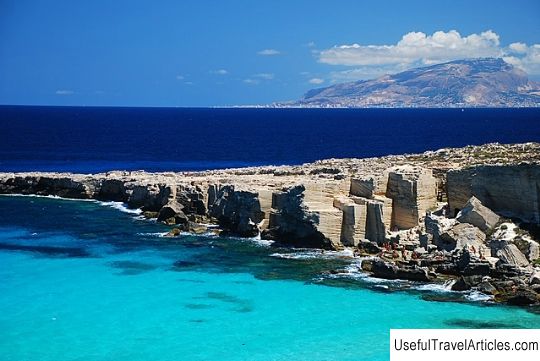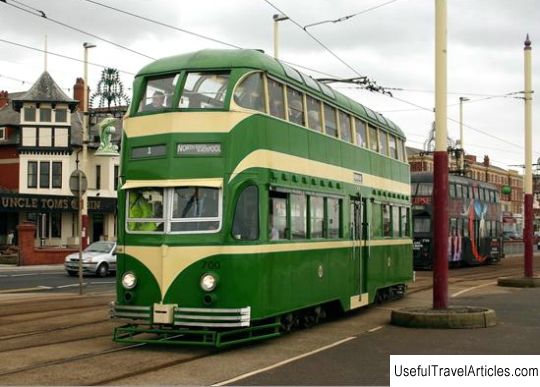Favignana island description and photos - Italy: Sicily island
Rating: 7,9/10 (1900 votes) 
Favignana Island description and photos - Italy: Sicily Island. Detailed information about the attraction. Description, photographs and a map showing the nearest significant objects. The name in English is Favignana. Photo and descriptionFavignana is the largest of the Aegadian Islands, located about 7 km west of the western coast of Sicily. The island has always been known for its tuna fishing, and in recent years has gained recognition as a popular tourist destination - today it can be reached by hydrofoils that regularly depart from Sicily. The total area of the butterfly shaped Favignana is about 20 sq. km. The main city of the island, bearing the same name, is located on a narrow isthmus connecting the two "wings". The eastern part of the island is predominantly flat, while the western is dominated by a chain of mountains, the highest of which is Monte Santa Caterina (314 meters). There is a fortress at its top, built by the Saracens and still used for military purposes (it is closed to the public). Not far from the southern coast of Favignana, there are a number of smaller islets. In ancient times, Favignana was called Eguza, which means “island of goats”. The current name of the island comes from Favonio, the Italian word for fen, a strong, gusty and warm wind. The first to colonize the island were the Phoenicians - they used it as a stopping point on their trans-Mediterranean trade routes. In 241 BC. during the First Punic War, off the coast of Favignana, a major naval battle broke out between the Romans and the Carthaginians. Two hundred Roman ships smashed the significantly larger Carthaginian fleet, sinking 120 enemy ships and capturing about 10 thousand people. The bodies of the dead were carried to the northeastern coast of the island, which was later named Red Bay due to the bloody color of the waves. In the 4th century A.D. the inhabitants of Favignana were converted to Christianity. In the Middle Ages, the island came under the rule of the Arabs, and for some time served as a base for the Islamic conquest of Sicily. Then the Normans reigned there, who in 1081 built a number of fortifications. Still later, Favignana and the other Aegadian Islands were leased to Genoese merchants, and in the 15th century they were presented to a certain Giovanni de Carissima, who received the title of "Tuna Baron". The first who in the 17th century began to systematically catch tuna, found in abundance in the coastal waters of Favignana, were the Spaniards. In 1637 they sold the island to the Marquis of Pallavicino of Genoa, who contributed to the founding of the city of Favignana around the Castello San Giacomo castle. In 1874, Pallavicini sold the Aegadian Islands to Ignazio Florio, the son of a wealthy industrialist, for two million lire. He invested heavily in the local economy and built a large canned tuna factory here. At the same time, the first quarries were opened on the island, the products of which were exported to Tunisia and Libya. In the 20th century, Favignana faced difficult times: the island's economy declined between the two world wars, and most of the population was forced to emigrate. The recovery of the tuna industry began only in the mid-1950s, and in the late 1960s, a rapid development of the tourism industry began, which continues to this day. Favinna is famous for its calcarenite caves - limestone with grains of calcite, which locals call tuff, and ancient tuna mining technology dating back to Arab times. There are few beaches on the island, due to its geological structure, but tourists are attracted here by opportunities for diving and snorkeling. In addition, the island is often visited from the Sicilian city of Trapani as part of a one-day tour - the road takes from 20 minutes to an hour, depending on the means of transport.      We also recommend reading Church of St. Barbary (Kosciol sw. Barbary) description and photos - Poland: Gdansk Topic: Favignana island description and photos - Italy: Sicily island. |




